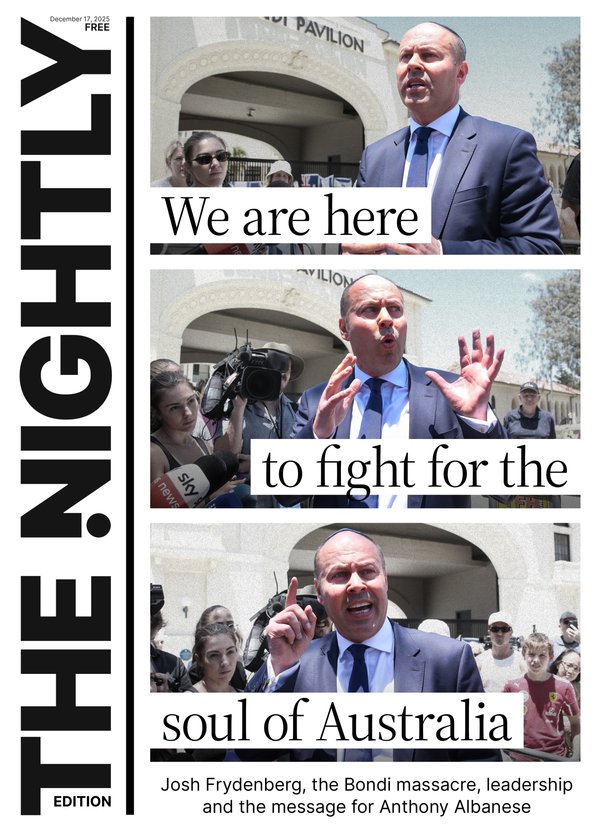ANDREW MILLER: Family life is beautiful, sad and full of regrets of not being there

In the 1930s she ran along the banks of the Swan River to her swimming lessons at Matilda Bay in Perth.
Dodging the jellyfish, Mum and her younger sister would dive from wooden jetties and cool off in the tannin-stained, prawn-filled shallows.
The afternoon breeze still blows hard through the top of the old gum trees lining that bay, and strips their leaves and ever-shedding bark to make a mess that no one can ever properly tidy up.
Sign up to The Nightly's newsletters.
Get the first look at the digital newspaper, curated daily stories and breaking headlines delivered to your inbox.
By continuing you agree to our Terms and Privacy Policy.I wasn’t around to catch her, when she fell down last week.
The neck of the femur is a structural weak point. This short segment joins the vertical shaft of our thigh bone to the ball that swivels ingeniously in the hip’s socket.
It is subjected to many times our weight whenever we run and jump on it. The hips’ huge range of motion enables mothers to flex and abduct in marathon labour, bringing forth life.
Every neck of femur has its limits though, especially in old age. Mum turns 97 this week, though her bones are much younger, and not just metaphorically.
We replace our skeleton almost completely about once every decade.
The bones are remodelled slightly thinner, and the calcium re-laid over and over by busy little osteoblast cells.

Like the paradoxical Ship of Theseus, we eventually replace ourselves almost completely, leaving us to ponder whether we really are the same person that squints in those awkward family photos.
I’m not the person I was, but still, I wasn’t there when she fell.
Sitting by her hospital bed, a stones-throw from that river, this room is over-familiar — a space outgrown, like a womb or an old school classroom. The beige environs are trauma-bonded to my subconscious, and they call out flashbacks from my twenties to a remnant of me.
I trained here — 30 years ago and more — pulling long, dark night-shifts as a struggling junior doctor. I made every mistake, while learning from good-wise nurses and a blood-marked copy of the Oxford Handbook of Clinical Medicine.
Trying to be better, so I did not have to ask for help from those whose approval I sought. We desperately wanted to be a part of some imperfect solution — to avoid being a burden as much as possible.
I see my grey hair now in these ageing, stain-bordered mirrors, and a particular memory makes me chuckle.
Patients more than once asked me for a newspaper, mistaking me for the paper-boy. Mum was about same age then that I am now, and we have somehow bumbled on together through the intervening decades of unruly remodelling, love and loss.
Time and again, in facsimiles of this room, I played bit parts in Shakespearean death scenes — a theatre of messy, strewn-sheet CPR with the ascendant whine of the defibrillator’s capacitor charging to 360 joules, before the monophasic jolt— “all clear!”— making the already-gone jump in their bed, one last time.
Then I would certify “life extinct, verification of death” for the coronial record. I even managed to get that wrong, once, when we “called it” too soon and the patient recovered — for a little while — after we simply left them alone.
The sun is getting low on her time by the river now, and there will be no rude CPR at the close.
Unfairly, her younger sister went first— to sit on a jetty in the sun somewhere, swinging her legs as she waits. Well, it’s nice to think so; little dreams don’t hurt.
The doctor asked me if Mum was confused. Apparently, she had pointed to the nurse and deadpan asked him “does your wife know about her?” There is sparkling mischief yet, in her one good eye.
Much as we would like to, we can’t always be there when we are needed — and we can’t avoid needing help forever.
Life is a mess that can’t be kept tidy, and it is beautiful.
